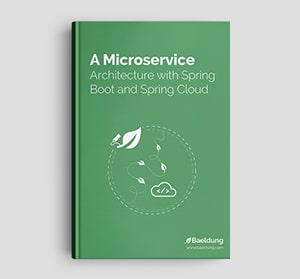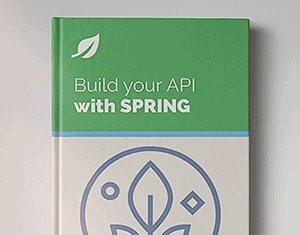1. Overview
In this quick article, we’ll have a look at how to customize the Spring Boot Actuators’ /info endpoint.
Please refer to this article to learn more about actuators in Boot and how to configure them.
2. Static Properties in /info
If we have some static information like the name of the application or it’s version that does not change for a long time, then it’s a good idea to add that details in our application.properties file:
## Configuring info endpoint
info.app.name=Spring Sample Application
info.app.description=This is my first spring boot application
info.app.version=1.0.0
That’s all we need to do to make this data available on the /info endpoint. Spring will automatically add all the properties prefixed with info to the /info endpoint:
{
"app": {
"description": "This is my first spring boot application",
"version": "1.0.0",
"name": "Spring Sample Application"
}
}
3. Environment Variables in /info
Let’s now expose an Environment variable in our /info endpoint:
info.java-vendor = ${java.specification.vendor}
This will expose the Java vendor to our /info endpoint:
{
"app": {
"description": "This is my first spring boot application",
"version": "1.0.0",
"name": "Spring Sample Application"
},
"java-vendor": "Oracle Corporation",
}
Please note that all the environment variables are already available on the /env endpoint. However, the same can be exposed quickly on the /info endpoint as well.
4. Custom Data From the Persistence Layer
Now let’s go one step further and expose some useful data from the persistence storage.
To achieve this, we need to implement InfoContributor interface and override the contribute() method:
@Component
public class TotalUsersInfoContributor implements InfoContributor {
@Autowired
UserRepository userRepository;
@Override
public void contribute(Info.Builder builder) {
Map<String, Integer> userDetails = new HashMap<>();
userDetails.put("active", userRepository.countByStatus(1));
userDetails.put("inactive", userRepository.countByStatus(0));
builder.withDetail("users", userDetails);
}
}
The first thing is that we need to mark the implementing class as a @Component. Then add the required details to the Info.Builder instance provided to the contribute() method.
This approach provides us a lot of flexibility regarding what we can expose to our /info endpoint:
{
...other /info data...,
...
"users": {
"inactive": 2,
"active": 3
}
}
5. Conclusion
In this tutorial, we looked at various ways to add custom data to our /info endpoint.
Note that we’re also discussing how to add git information into the /info endpoint.
The code backing this article is available on GitHub. Once you're
logged in as a Baeldung Pro Member, start learning and coding on the project.















